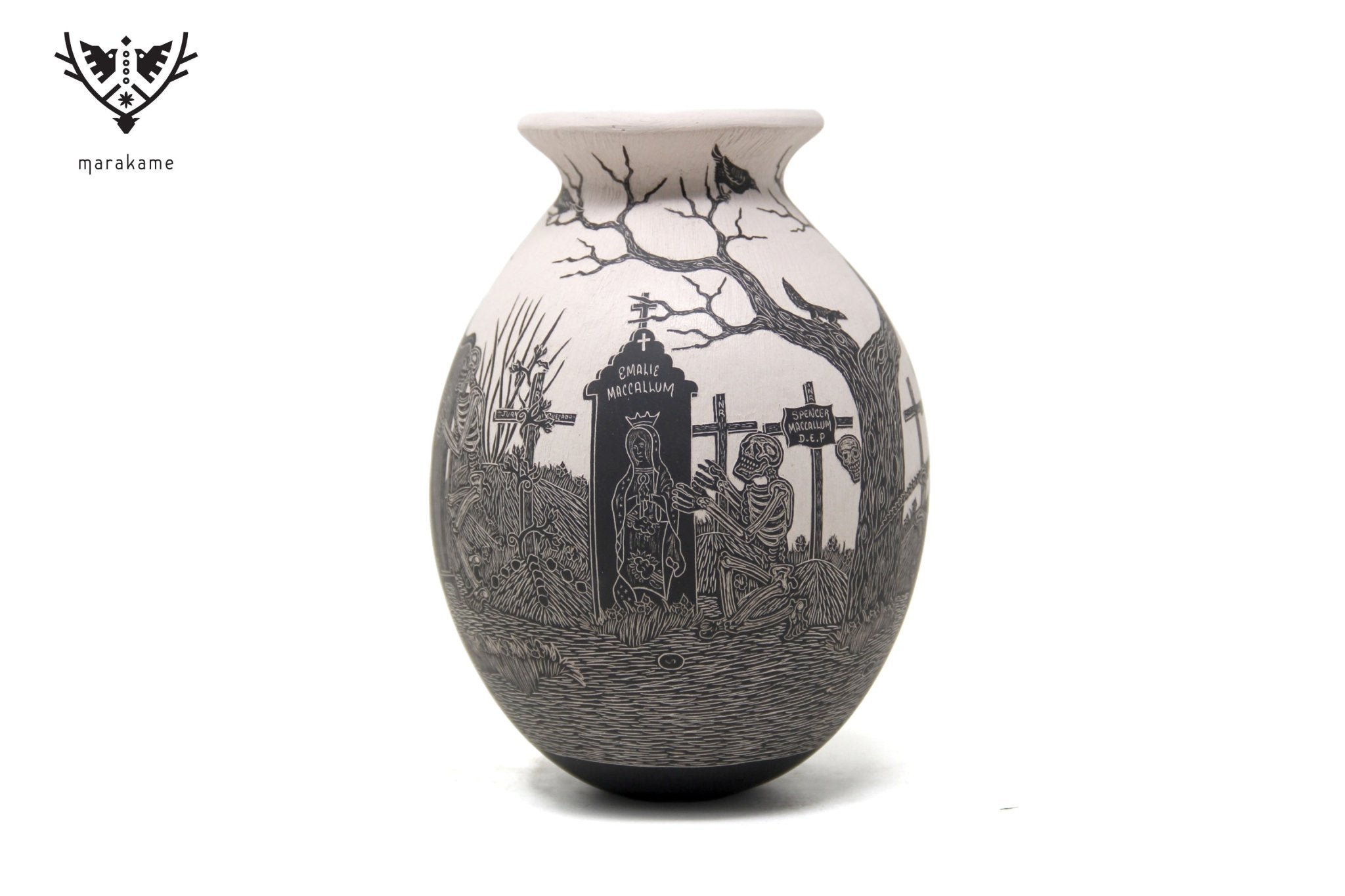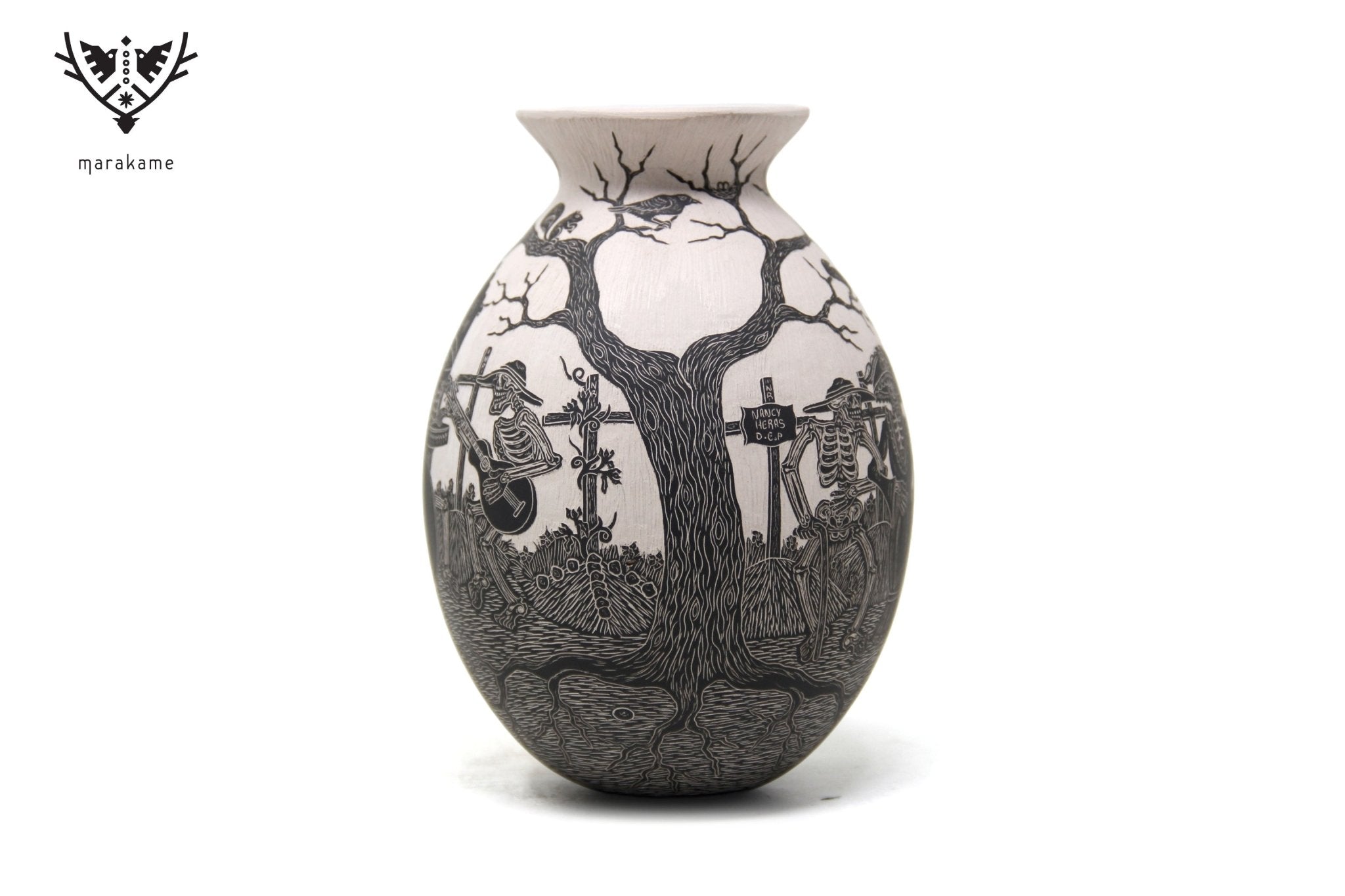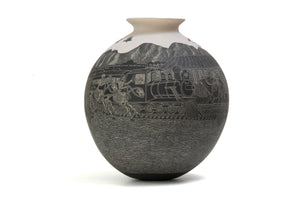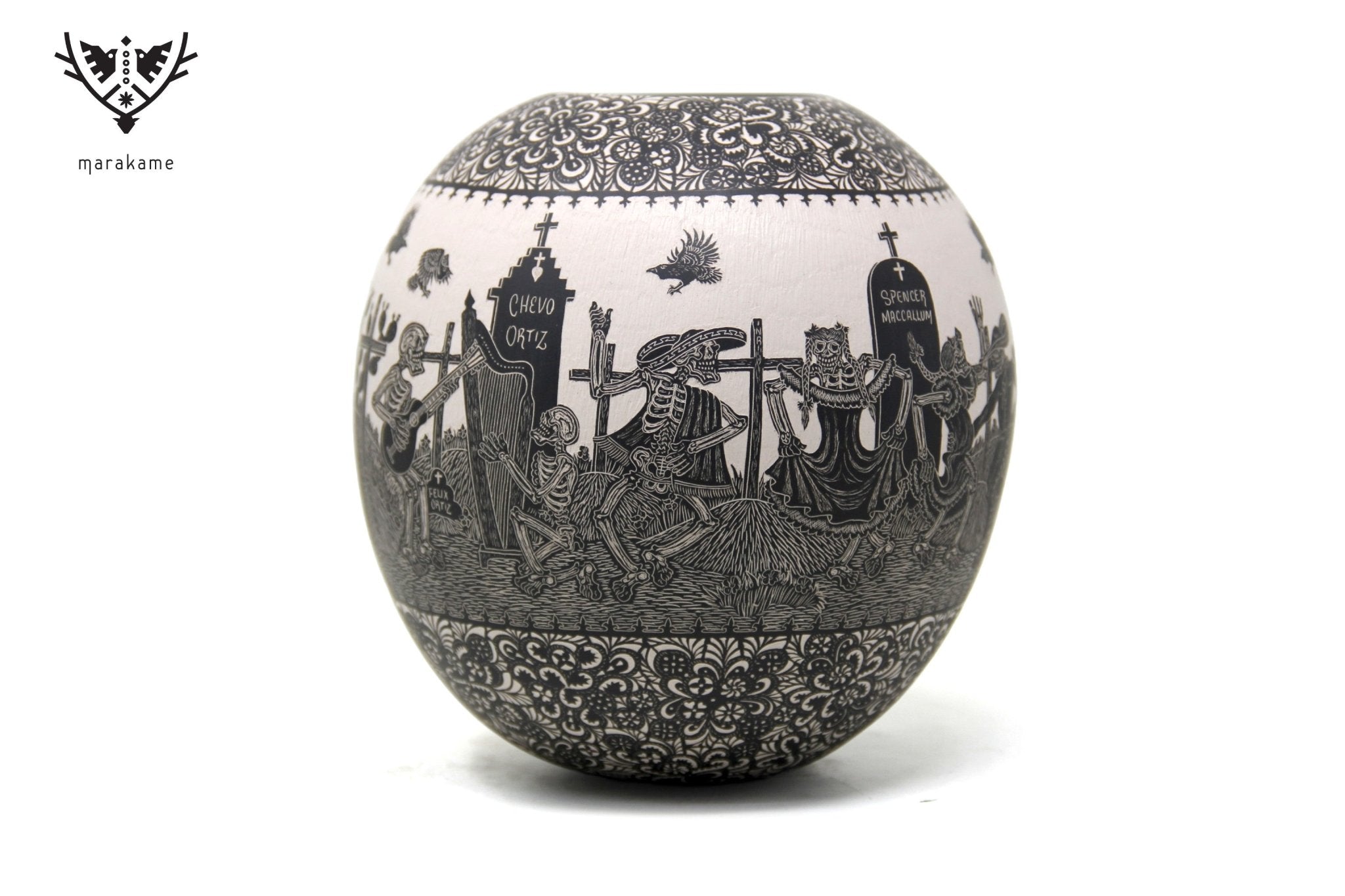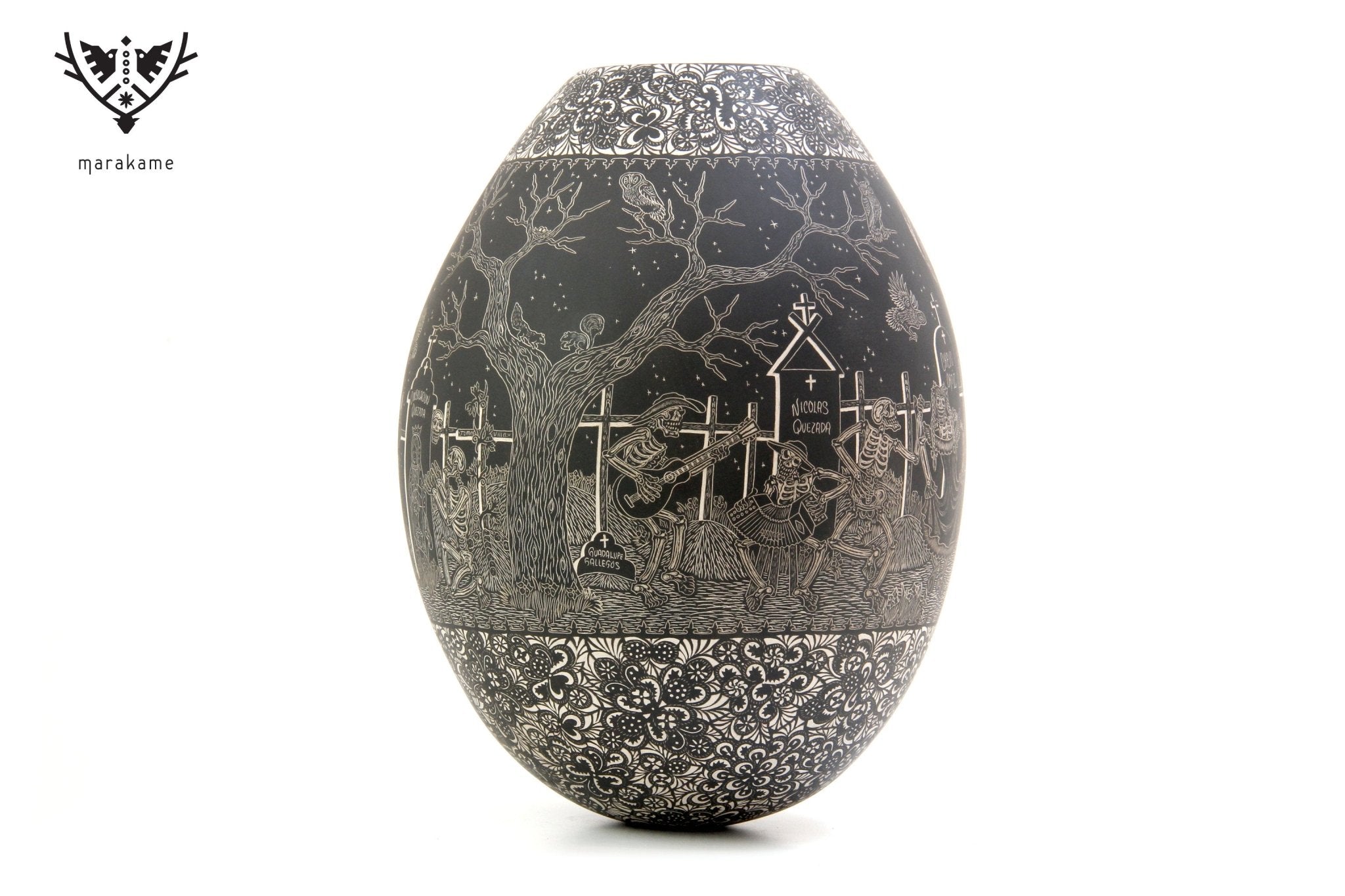Hector Javier Martínez

The most important characteristic of Héctor Javier Martínez's style is the drawing. It dominates a unique graphic and iconological territory in the ceramics made in Mata Ortiz that unites it with the universe of plastic and graphic artists who manifest an undoubted influence of Mexican journalistic caricature of the 1852th century, particularly of the illustrators José Guadalupe Posada (1913–1830). ) and Manuel Manilla (1895–XNUMX). La Catrina, the night of the dead, trains and cemeteries, skeletons illustrating the dynamics of the living world, satire and self-confidence come to the scenarios that Héctor deploys in each piece.
Read more
The forms he uses are elementary, simple, but of high quality: open-mouthed vertical pitchers, plates, spherical pots that are held with a fragile and clear balance. He integrates the best of two creative worlds: the light and forceful ceramics of Mata Ortiz and the narrative richness offered by the monochromatic play of drawing, between the superficial tint and the earthy clarity of the clay.
Héctor maintains that he lives through his pots. He dedicates himself for days and weeks, sgraffito and drawing with a metal tip the hills, vegetation, animals and fantastic beings with which he creates visual stories. The concentration that each piece requires allows him to remember the moments he lived while he produced each one of them. They are unforgettable, personal moments that he lived while working with dedication and, at times, anxiety. When you work as he does, there is no possible mistake in the drawing, it cannot be erased and edited, and the burning of the pieces is shrouded in uncertainty. If the pots do not survive the fire and break, the narrative is lost and we have to start over.
For this reason each work is unique and special. Sometimes, once Héctor Javier has finished drawing, the piece passes into the hands of Gabriela, his partner, who completes the work by making the night or the day (the skies of each scene) before it can undergo the last part. of process. In those cases, both sign the pot on its bottom, as a testimony of love and collaboration.



